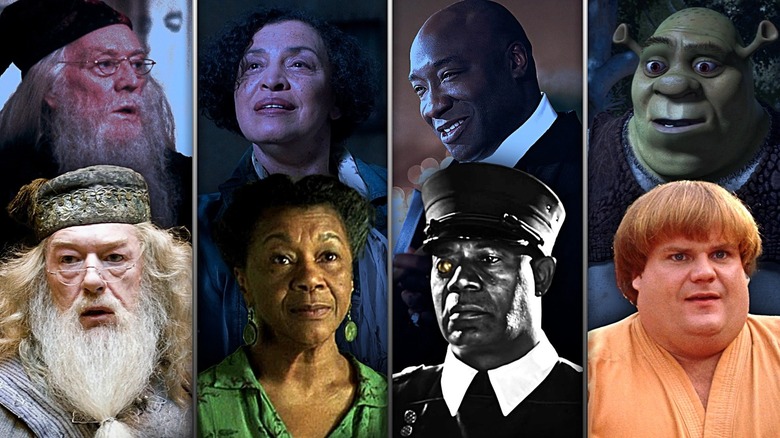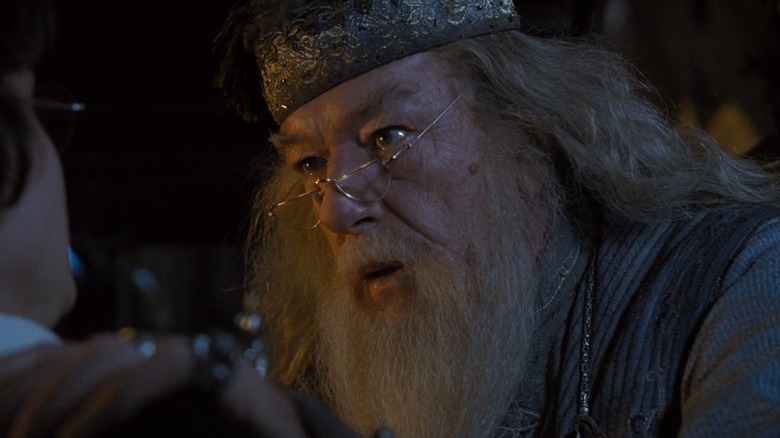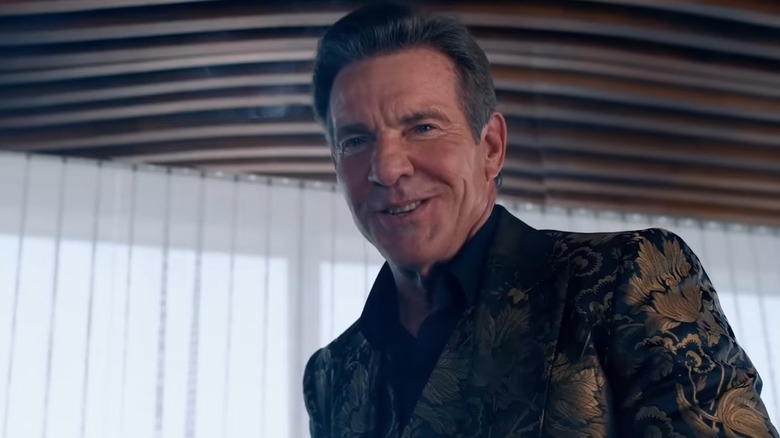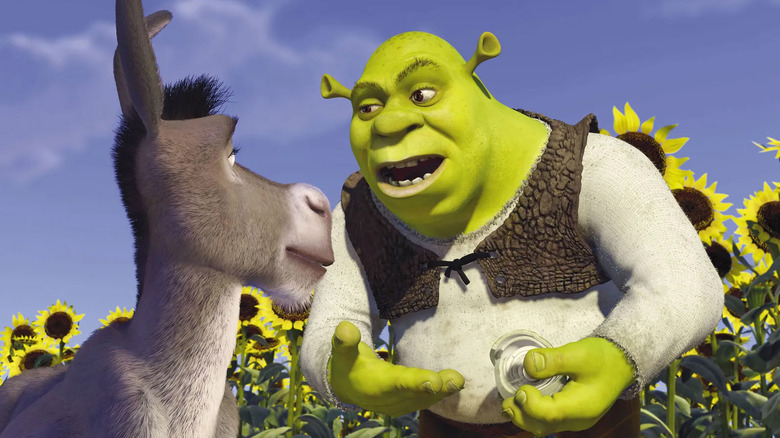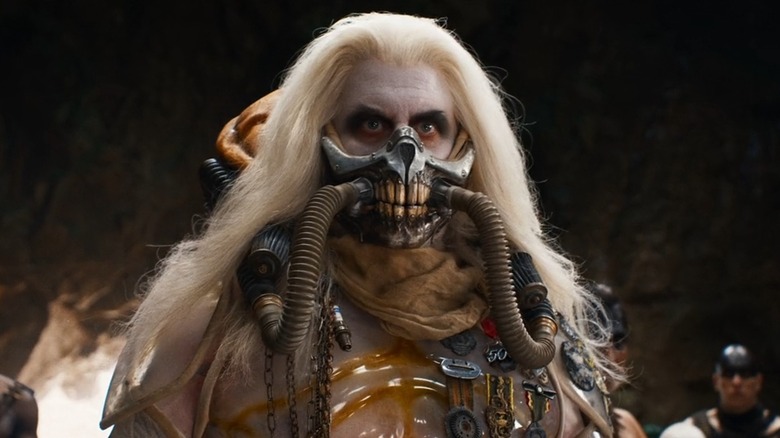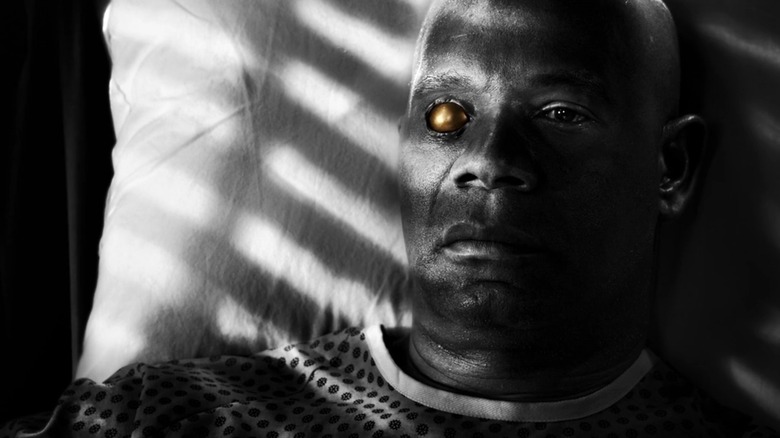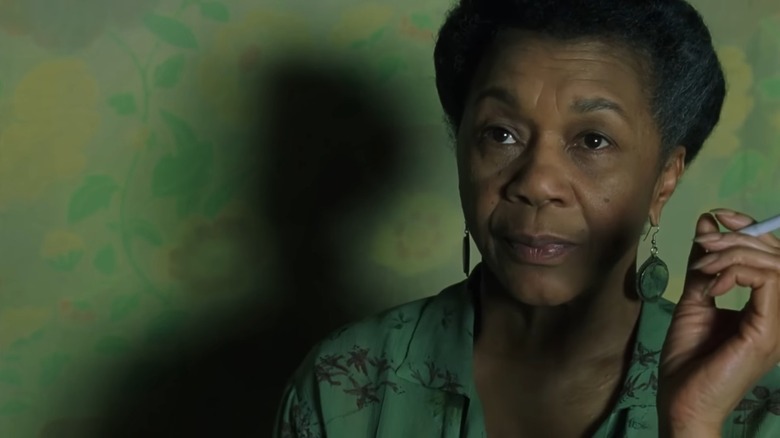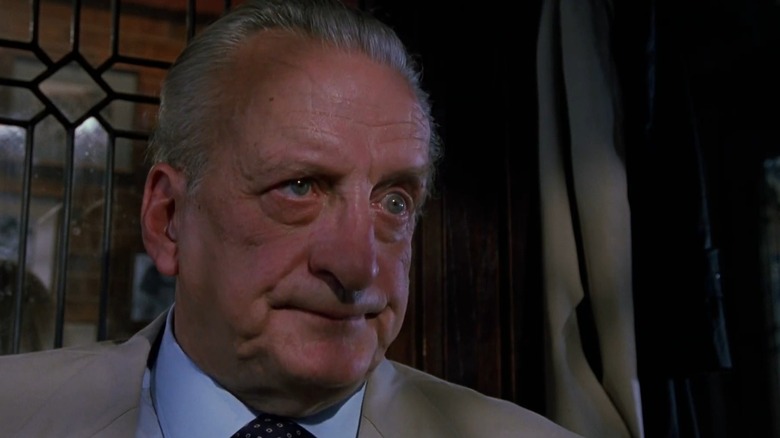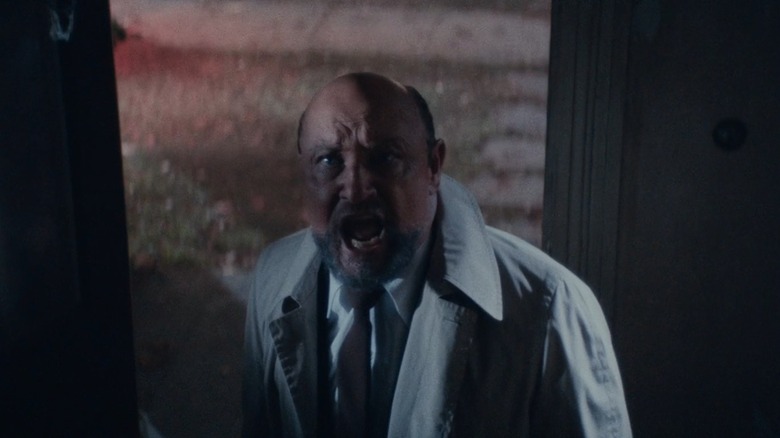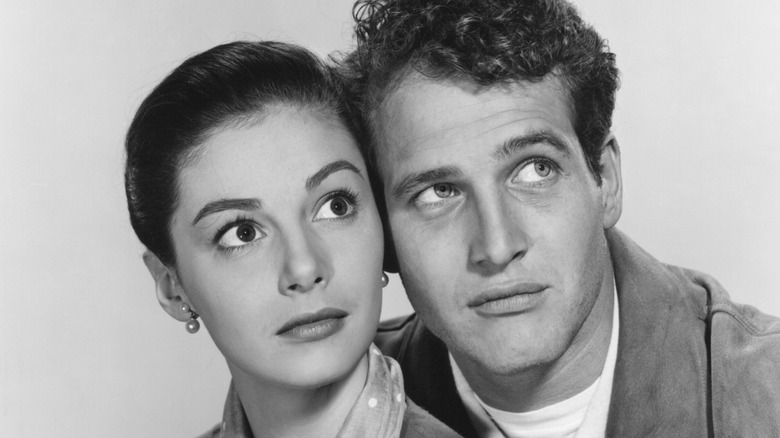10 Movie Characters Who Were Recast After An Actor Died
Recasting a character is always a tricky proposition. Sometimes, it's just not working out, and you go in a different direction, but when you're dealing with a franchise character, you risk angering longtime fans who have emotionally invested in a particular actor's performance. That was the case when "The Fresh Prince of Bel-Air" replaced Aunt Viv, recasting Janet Hubert with Daphne Reid, and people still talk about that situation decades later.
There are also instances when an actor dies while filming something meant to be ongoing. In early 2025, it was reported that, despite fan investment in Chadwick Boseman's performance, Marvel is considering recasting T'Challa ahead of "Black Panther 3." In fact, writer Jeff Sneider reported that the role had already been offered to someone new, but they decided not to take the risk. "They turned it down, not wanting to jeopardize their career momentum by stepping into Boseman's gigantic shoes, which may be too big to fill, even for Hollywood's most talented Black actors," he wrote.
That situation has happened before, though. Sometimes a franchise gets rebooted years later, and an important actor has already died. Sometimes actors die in the middle of production, forcing productions to scramble to recast a project with someone new. Fans sometimes support a new actor's portrayal, but sometimes the backlash is severe. Here, we've assembled 10 movie characters who were recast after an actor died.
Michael Gambon took over Dumbledore from Richard Harris
In the first two "Harry Potter" films — "The Sorcerer's Stone" and "The Chamber of Secrets" — Professor Dumbledore was played by Richard Harris. He inhabited the role of Harry's eccentric mentor perfectly, at once kooky and kind, matching the tone of director Chris Columbus's whimsical interpretation of J.K. Rowling's magical world. Things changed, however, by the third film, "The Prisoner of Azkaban." Alfonso Cuarón took over directing duties, envisioning Hogwarts as an altogether darker, more mysterious place. The biggest change, though, was that Dumbledore had to be recast, as Harris sadly died between the second and third movies.
The role went to Michael Gambon, whose portrayal of Dumbledore matched the franchise's new tone. He spoke about filling his predecessor's shoes in an interview with The Guardian, insisting that he didn't factor Harris's interpretation of the character into his own performance. "Do a sort of Richard Harris impersonation, you mean? It never crossed my mind," he said. "If you were playing Lear, you wouldn't copy the last person to do it."
Gambon, it seems, was only concerned about the screenplays he was asked to perform. In fact, Gambon admitted that he never read the "Harry Potter" books. Fans criticized his portrayal — especially his line reading, "Did you put your name in the Goblet of Fire?!" — but Gambon insisted on forging his own path. "He's got to be a bit scary. All headmasters should be a bit scary, shouldn't they?" he reasoned.
After Ray Liotta died, Dennis Quaid was cast in The Substance
At the beginning of Coralie Fargeat's 2024 film "The Substance," a middle-aged actor named Elizabeth (Demi Moore) realizes she's being replaced. She's called into a lunch meeting with Harvey (Dennis Quaid), the head of the network where she's been starring on a workout show. As he guzzles down the most disgusting shrimp you've ever seen in your life, Elizabeth realizes she's finally too old for Hollywood.
It's an instant-classic, gross-out horror movie sequence, and it was almost performed by someone else entirely. Harvey was originally supposed to have been played by "GoodFellas" star Ray Liotta, but Quaid replaced him after his untimely death just before shooting commenced.
Fargeat told Hammer to Nail that Liotta had been excited about the film, recalling, "I had a great meeting with him and he loved the project. It was a very powerful meeting." After Liotta died, the production scrambled to find someone else. Quaid leapt at his chance to fill the role. "He completely portrayed the kind of excess and craziness I had in mind for the character," Fargeat raved. "Dennis came onto the project rather quickly. We did not have time to rehearse or do readings. Naturally it worked. He really ate those two kilos of shrimp."
Chris Farley recorded most of Shrek's dialogue before Mike Myers
Before Shrek became the lovable, Scottish-sounding ogre we know and love today — before Mike Myers recorded the big green guy's dialogue, in other words — Shrek's voice sounded quite different. Much of the dialogue for the film had already been performed by "Saturday Night Live" alum Chris Farley, the comedian who successfully made the jump from television to films like "Tommy Boy" and "Black Sheep."
Unfortunately, in 1997, Farley died of an overdose at only 33 years old. He'd been working on "Shrek," but he hadn't yet completed the film, so the filmmakers took the opportunity to retool the character's look and find someone else to play the part. That's how Myers got involved. He told Vulture that he wasn't initially aware that Farley had been hired first, but he guessed. "They had created this maquette, a little statue made of clay of all the characters, and Shrek looked exactly like Chris Farley," he recalled. "I was at my third meeting, and I go, 'Guys, was this offered to Chris Farley and then he died?' Everyone looked at their shoes ... It was! I was right, but they didn't tell me."
Myers had to convince Jeffrey Katzenberg that his Scottish take on the ogre was the right direction for the film to go. "Ogres have tempers, and so do Scottish people," Myers reasoned. Eventually, they relented, and the rest is animation history.
Lachy Hume stepped into Immortan Joe's shoes in Furiosa: A Mad Max Saga
"Mad Max: Fury Road" villain Immortan Joe (Hugh Keays-Byrne) is one of the best bad guys in recent memory. He's got an instantly-iconic look — that long, flowing white hair; that wide, toothy breathing apparatus. Keays-Byrne was a fitting bit of casting too, since he played Toecutter in the first "Mad Max." The franchise is built like a myth, after all, so it makes sense for director George Miller to have brought someone back.
Keays-Byrne died between "Mad Max: Fury Road" and its prequel, "Furiosa: A Mad Max Saga." Immortan Joe figures heavily into the 2024 film, as we learn that he raised a kidnapped Furiosa for years. As a result, the character's prominence meant the role needed to be recast. Thankfully, that instantly-iconic look lends itself well to someone else taking over the part; half of his face is hidden anyway.
For "Furiosa," Miller cast Lachy Hulme as the Citadel's fearsome ruler. Hulme was already meant to play Rizzdale Pell, a goon who serves Chris Hemsworth's character Dementus. Plenty of other "Mad Max" parts had been double-cast, so Hulme threw his name in the ring, convincing Miller. He told Connor Dalton that the costume was bulkier than he expected. "[Keays-Byrne] actually has scenes where he's running, and I could barely get up to a decent pace walk," he said. "So I give full props to the late great Hugh Keays-Byrne. I don't know how he did it."
Dennis Haysbert replaced the late Michael Clarke Duncan in Sin City: A Dame to Kill For
In "Sin City," Michael Clarke Duncan cut an imposing figure as the ominous one-eyed Manute. The unusually-polite mob enforcer is involved in a kidnapping, and as is the case in many Robert Rodriguez films, things get incredibly violent. Duncan enjoyed filming "Sin City," telling BlackFilm.com in 2006, "Working with Robert Rodriguez and Frank Miller is like another heaven gig." He was looking forward to returning for "Sin City 2," telling the outlet, "Hopefully they will come up with something and start writing something soon."
Unfortunately, "Sin City 2" took many years to get off the ground, and the star of "The Green Mile" died before he could reprise his role. When Rodriguez finally made "Sin City: A Dame to Kill For" in 2014, Manute was recast. "Manute is a character that has been part of the heart of the 'Sin City' tales, and the late Michael Clarke Duncan beautifully established that role onscreen. We could not tell the story of 'Sin City: A Dame to Kill For' without Manute and are thrilled to welcome Dennis Haysbert to the cast," Rodriguez said in a statement.
Haysbert told BlackFilm.com that he was a fan of the graphic novels. "I was very excited about it, even back then, and was questioning my agent and manager, saying 'Why didn't you get me on this?'" he recalled. "The second time around is the charm and here I am."
The Matrix Revolutions tapped Mary alice to play The Oracle after Gloria Foster died
The Oracle is one of the most important characters in "The Matrix." She's a unique being, able to see within The Matrix like no one else, issuing a prophecy that suggested Neo (Keanu Reeves) would be The One to save the world. Originally, The Oracle was played by Gloria Foster, and she imbued the character with a noble wisdom. In Foster's hands, she's a character you intuitively trust, even as her prophecies are ultimately called into question.
Sequels "The Matrix Reloaded" and "The Matrix Revolutions" were both released in 2003, but Foster only played The Oracle again in the second film. She died before shooting on the third movie had been completed, meaning that the Wachowskis needed to find an in-universe explanation for why she suddenly looked different. They decided that The Oracle had been attacked and was now using a different identity.
The role was taken over by Mary Alice, who once co-starred with Foster on Broadway. She attributed her success in the role to her commitment to networking, making sure that her name was still relevant in Hollywood among people she'd known. Alice told BlackFilm.com, "The fact that I'm here is because somebody recommended me to replace Gloria Foster who died and wasn't able to do the rest of the movie." She seems just as wise in the role, just as trustworthy, and it all worked out great. (By the way, in case you didn't hear, "The Matrix" sequels are good, actually!)
Harrison Ford stepped into the MCU to replace William Hurt
In "The Incredible Hulk," the movie that kicked off the Marvel Cinematic Universe, William Hurt played General Thaddeus "Thunderbolt" Ross. The character came back around multiple times throughout the franchise, having been promoted to Secretary of State in time for "Captain America: Civil War," "Avengers: Infinity War," and "Avengers: Endgame." Comic book fans know that Thaddeus Ross eventually becomes Red Hulk, a storyline that Hurt was looking forward to exploring in 2025's "Captain America: Brave New World." Producer Nate Moore told Entertainment Weekly, "He was very excited to come back, to be quite frank."
Hurt died in 2022, before the film entered production, so he was never able to see the character through to his big, burly transformation. Thankfully, producers had an ace in their pocket. "It just so happened that Harrison Ford reached out to Kevin Feige about potentially playing in the Marvel sandbox," Moore explained.
Ford plays the character in "Brave New World," and he told The Hollywood Reporter that he's not sure exactly why he signed on. "I can't explain myself to myself, I just work here," he laughed. "I thought, 'Everybody else seems to be having a great time.' I watch all these terrific actors having a good time [in Marvel movies]. I like doing something different to what I've ever done and pleasing people with it. So I'll try a piece of that."
George C. Scott played Lieutenant Kinderman in The Exorcist III after we lost Lee Cobb
In "The Exorcist," Lieutenant Kinderman (Lee J. Cobb) is a detective assigned to investigate the mysterious death of a film director, who was killed in a church. The situation brings him into contact with a movie star named Chris MacNeil (Ellen Burstyn), whose daughter Regan (Linda Blair) is possessed by a demon. At the end of the film, Kinderman turns up just in time to see the aftermath of the movie's iconic exorcism sequence, failing to prevent more carnage.
By the time "The Exorcist III" rolled around in 1990, Cobb had long since died. After the disappointingly-received "Exorcist II: The Heretic," the third film in the franchise was set to focus on Lieutenant Kinderman as he investigates a serial killer called the Gemini. In order to pull it off, writer/director William Peter Blatty cast George C. Scott to take over the role.
You would think Scott would have been familiar with one of the best films ever made, but in a behind-the-scenes interview from the set of "The Exorcist III" (via YouTube), Scott professed ignorance of Kinderman's role in the first film. "I know the cop character was in the first one, but I don't know how important it was," he mused. Though Kinderman was important, he's the central character of the third film, and Scott's portrayal is part of why "The Exorcist III" is almost as good as the first one.
Tom Jones Jr. wore prosthetics to resemble Donald Pleasance in Halloween Kills
When David Gordon Green's 2018 film "Halloween" rebooted the iconic slasher franchise's chronology yet again, he crafted a new timeline where Michael Myers had been institutionalized since his 1978 killing spree. There's just one problem with that: We see Myers' body disappear at the end of the original John Carpenter film.
That problem was solved at the beginning of "Halloween Kills," the second film in his sequel trilogy. There's an extended flashback in that movie that shows the masked killer returning to his childhood home and murdering a police officer (Jim Cummings) who responds to the scene. Before he can escape again, however, Michael is stopped by Dr. Loomis (Donald Pleasance), his old psychologist.
However, Pleasance has been dead since 1995. The scene in "Halloween Kills" is uncanny, though, making it easy to wonder whether the filmmakers had used A.I. or digital effects to recreate his face or perhaps had found a deleted scene in an archive somewhere. The answer is, surprisingly, neither. Dr. Loomis was actually recast, and Pleasance's face was recreated using prosthetics on top of a new actor. "No, he was not CGI, but our own construction foreman Tom Jones Jr. in an 11 piece prosthetic makeup with hair pieces," effects artist Christopher Nelson wrote on Instagram alongside photos showing his work. "So fun to do and was a pretty quick turnaround actually."
Paul Newman replaced James Dean in Somebody Up There Likes Me, launching his career
Nowadays, it's pretty clear that Paul Newman is one of the best actors to ever do it. After all, Newman starred in three separate projects rated 100% Fresh on Rotten Tomatoes. In the early days of his career, though, his eventual dominance wasn't a sure thing. After all, his 1954 debut "The Silver Chalice" was pretty universally-disliked; it currently clocks in at only 13% Fresh.
Two years later, the entire landscape of Hollywood was different. In 1955, Hollywood saw the rise of James Dean, an exciting new star with whom Newman once filmed a sexually-charged screen test. "East of Eden" and "Rebel Without a Cause" were released that year, cementing Dean's legacy. After filming "Giant," he was set to star in a boxing movie called "Somebody Up There Likes Me," about the life of famed boxer Rocky Graziano. One problem, though: the same year he became a superstar, Dean was killed in a car crash.
That left the role of Rocky in "Somebody Up There Likes Me" wide open, and Newman stepped up to fill the part. "Word was that the film was to be Jimmy Dean's next project, and his sudden death obviously scrambled things," Newman wrote in his memoir (via The Independent). "I know there are some people who attribute my career breakthroughs to Jimmy's death. Yes, there were elements of luck." The film was a hit, and Newman's career was off to the races.
